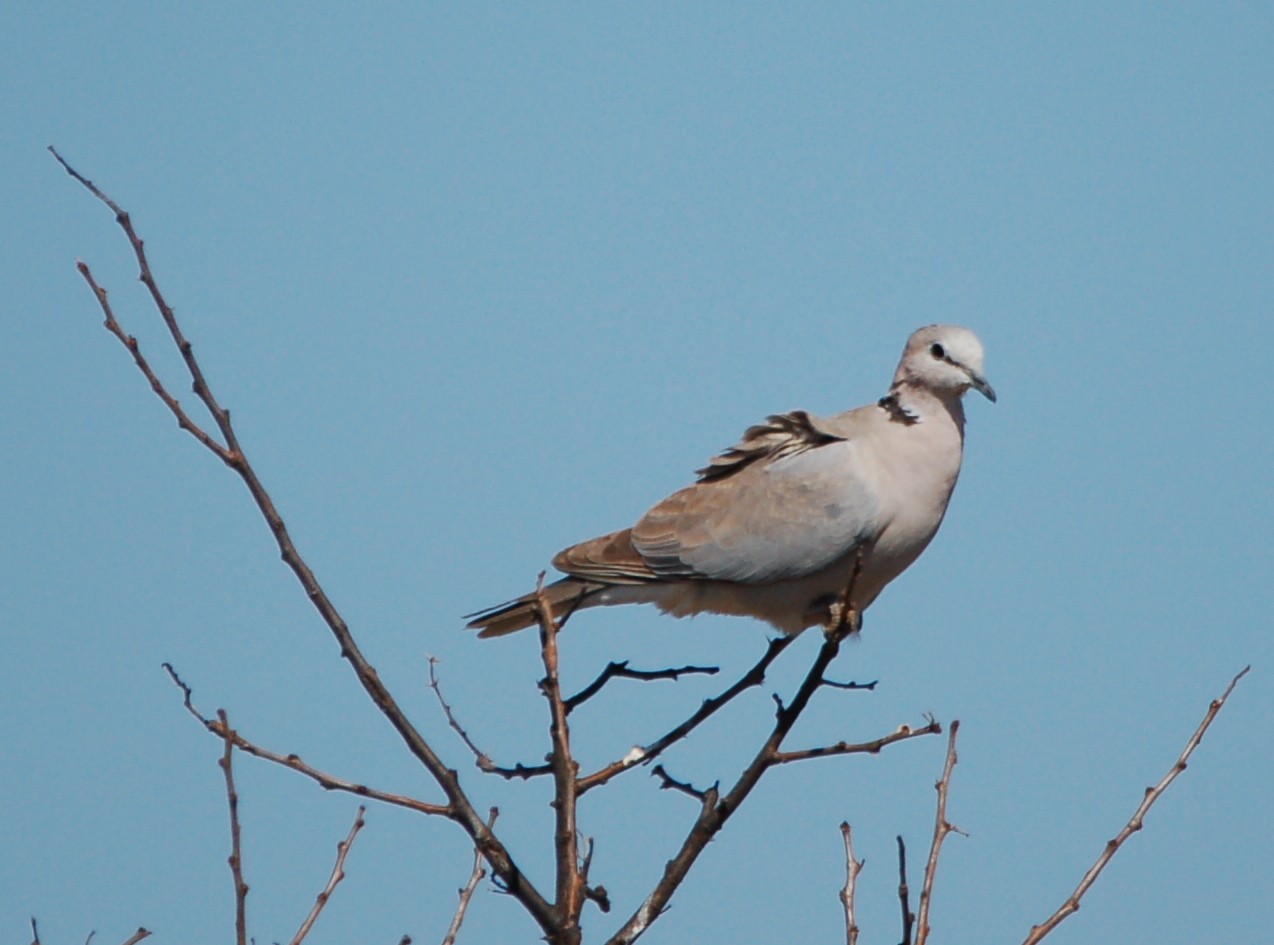Ring-necked Dove
A species of Turtle-doves and Collared-doves, Also known as Cape Turtle Dove Scientific name : Streptopelia capicola Genus : Turtle-doves and Collared-doves
Ring-necked Dove, A species of Turtle-doves and Collared-doves
Also known as:
Cape Turtle Dove
Botanical name: Streptopelia capicola
Genus: Turtle-doves and Collared-doves
Content
Description General Info
Description
Their body feathers are darkest on the upper side, where they are coloured in dull tones of grey and brown, with shades of lavender on the nape. It is paler below, where a tint of pinkish lavender is usually present. The lower belly and crissum (the undertail coverts surrounding the cloaca) is white. As with related species, they have white fringes and conspicuous white tips to the otherwise slate grey tail feathers. The tail pattern is particularly noticeable during the display flight. Individual plumage variation is high, with some light and others almost sooty. Males and females look alike, although the males are slightly bigger. They measure 25–26.5 cm (9.8–10.4 in) in length and weigh 92–188 g (3.2–6.6 oz). The eyes are almost black, the bill is black and the feet are dark purple. An immature is duller and lacks the semi-collar of an adult. It also has buff edges to all the upper part and wing covert feathers, while the plumage below is broadly edged greyish-white. 
Size
25 cm
Nest Placement
Tree
Feeding Habits
Ring-necked Dove primarily consume seeds, including those from grasses and various grains, complemented by fruits, berries, and occasionally insects. Feeding behavior involves foraging, often on the ground, with an adaptability to diverse food sources when available.
Habitat
Ring-necked Dove favor diverse environments, predominantly occupying semi-desert regions, savannahs with Boscia and Acacia species, various woodland habitats, agricultural areas, and open plantations. They avoid dense forests and extremely arid deserts such as dune fields and gravel plains. These birds adapt well to human-altered landscapes, thriving in fynbos regions, miombo woodlands, grasslands, and around farmstead tree groves across broader geographical savanna and semi-arid zones. They typically avoid elevations above 2,000 meters and demonstrate mobility based on climate and resource availability.
Dite type
Granivorous
General Info
Feeding Habits
Bird food type
Species Status
Not globally threatened.
